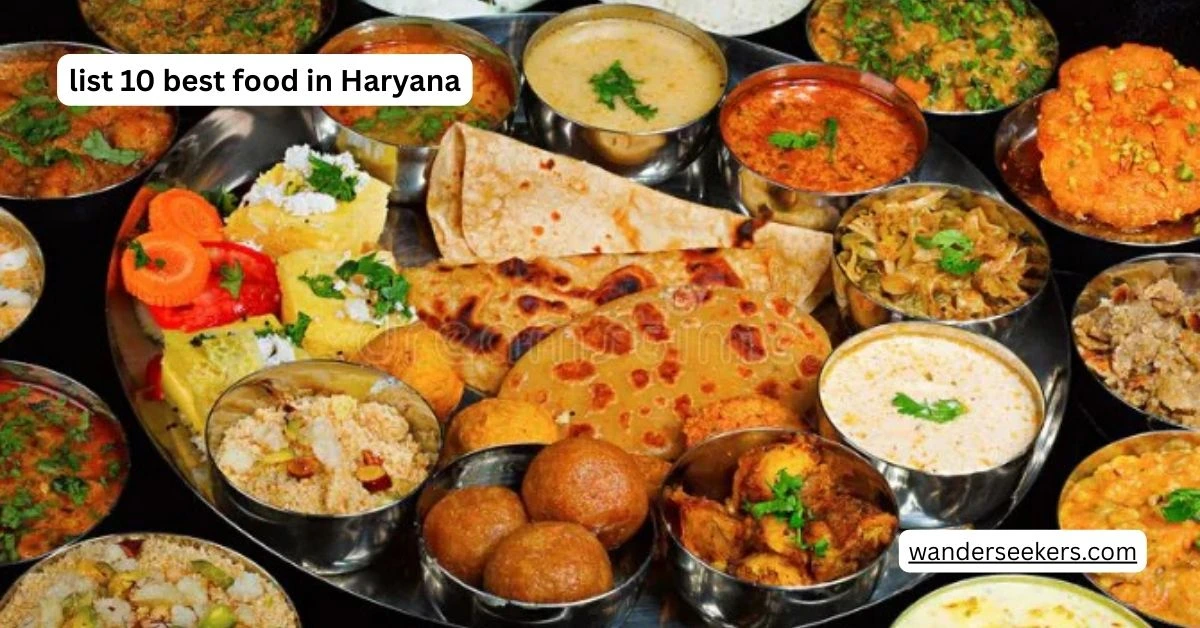Haryana is known for its rich agricultural heritage, and its cuisine reflects the simplicity and wholesomeness of its people. The food here is deeply rooted in dairy products, fresh grains, and earthy flavors. Here are 10 of the best foods you must try in Haryana:
Table of Contents
1. Bajre ki Roti with Sarson ka Saag
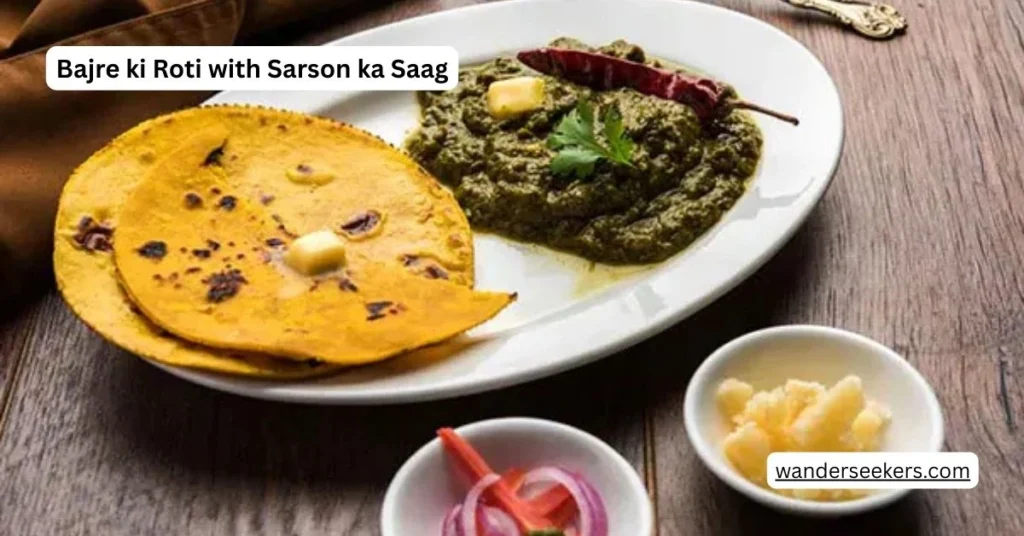
Bajre ki Roti with Sarson ka Saag is a classic North Indian dish deeply rooted in Punjabi and Rajasthani cuisine. Bajre ki Roti is a traditional flatbread made from millet flour, known for its earthy flavor and dense texture. It is prepared by kneading millet flour with warm water, rolling it into thick rotis, and cooking it on a hot tawa. The roti is often smeared with ghee to enhance its taste. Sarson ka Saag, a winter delicacy, is made from mustard greens, and spinach, and bathed, slow-cooked with spices like garlic, ginger, and red chilies. The saag is finished with a tempering of ghee and served with a dollop of butter. This wholesome meal is packed with nutrients, offering warmth and energy during cold seasons. You can find a detailed recipe here. If you’d like to watch a preparation video, check out this or this tutorial.
2. Hara Dhania Cholia
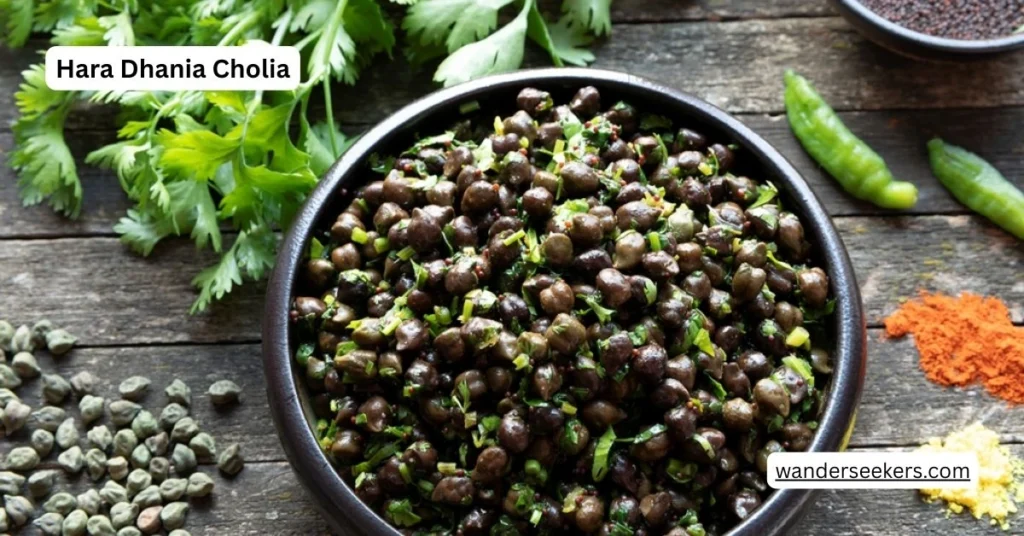
Hara Dhania Cholia is a flavorful dish from Haryana, made with fresh green chickpeas (cholia) and coriander (dhaniya). This dish is a winter specialty, as green chickpeas are available during the colder months. The preparation involves boiling scholia until tender and then cooking it with onions, tomatoes, ginger-garlic paste, and a blend of spices like cumin, coriander powder, turmeric, and garam masala2. The addition of fresh coriander enhances the aroma and taste, making it a vibrant and delicious curry. Hara Dhania Cholia is typically served with roti or rice, offering a wholesome and nutritious meal. The dish is loved for its earthy flavors and simple yet rich preparation, making it a staple in Haryanvi cuisine.
3. Kadhi Pakora
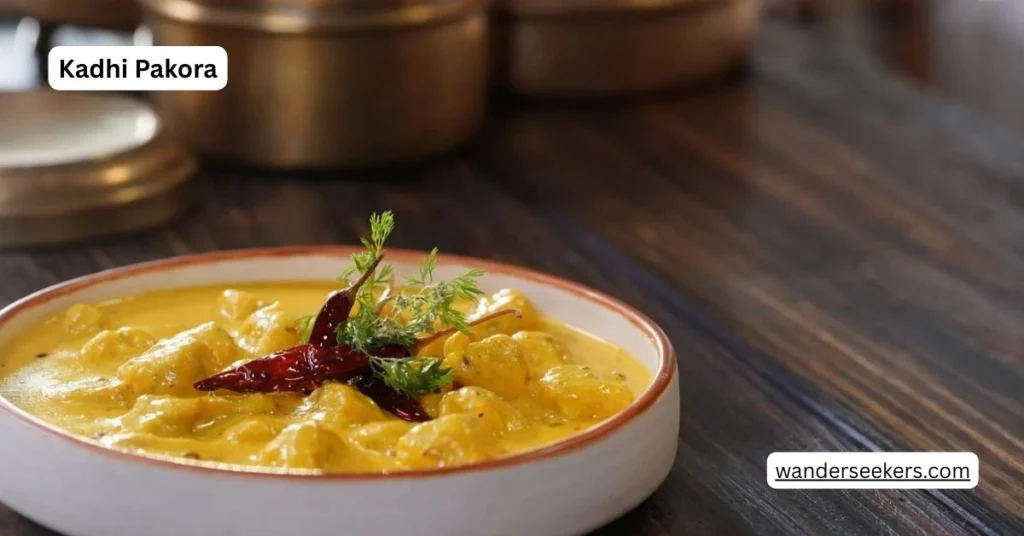
Kadhi Pakora is a beloved North Indian dish, known for its tangy yogurt-based curry and crispy gram flour fritters (pakoras). The kadhi is made by whisking gram flour (besan) with yogurt, then slow-cooking it with turmeric, red chili powder, and aromatic spices like cumin and fenugreek seeds. The pakoras, prepared by mixing besan with onions, green chilies, and spices, are deep-fried until golden brown and then added to the simmering kadhi. The dish is finished with a ghee-based tempering of mustard seeds, dried red chilies, and curry leaves, enhancing its rich flavor. Kadhi Pakora is traditionally served with steamed rice, making for a comforting and satisfying meal. This dish is a staple in Punjabi households and is often enjoyed during special occasions.
4. Rajma Chawal
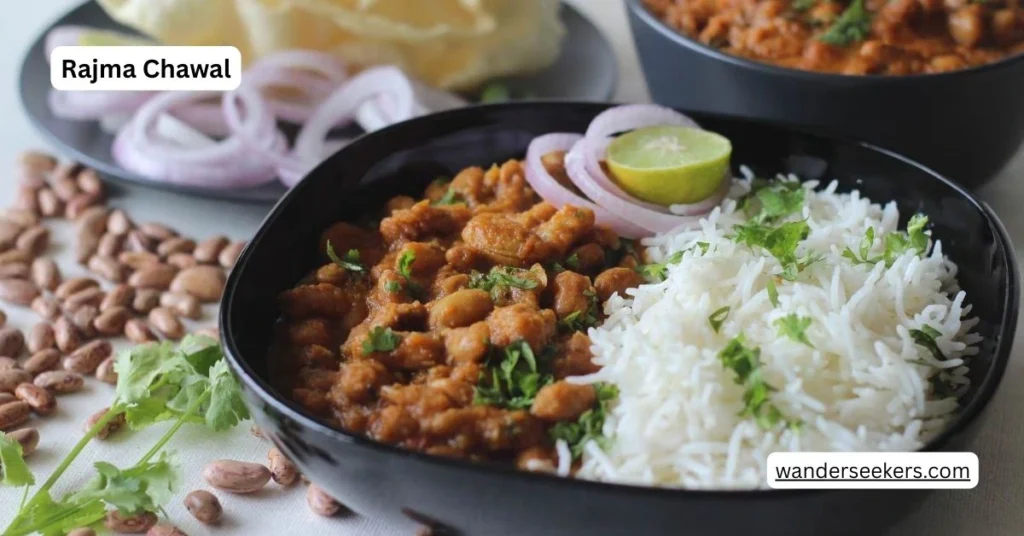
Rajma Chawal is a beloved North Indian dish, known for its comforting flavors and rich texture. It consists of rajma (red kidney beans) cooked in a thick, spiced tomato-based gravy, served with steamed basmati rice. The kidney beans are soaked overnight, then slow-cooked with onions, garlic, ginger, and aromatic spices like cumin, coriander, and garam masala, creating a flavorful and hearty curry. The dish is often garnished with fresh coriander and a dollop of butter, enhancing its taste. Rajma Chawal is a staple in Punjabi households and is commonly enjoyed as a weekend meal or during special gatherings. It’s protein-rich beans and wholesome rice makes it a nutritious and satisfying dish. Whether paired with pickle, yogurt, or salad, Rajma Chawal remains a favorite comfort food across India.
5. Aloo Roti
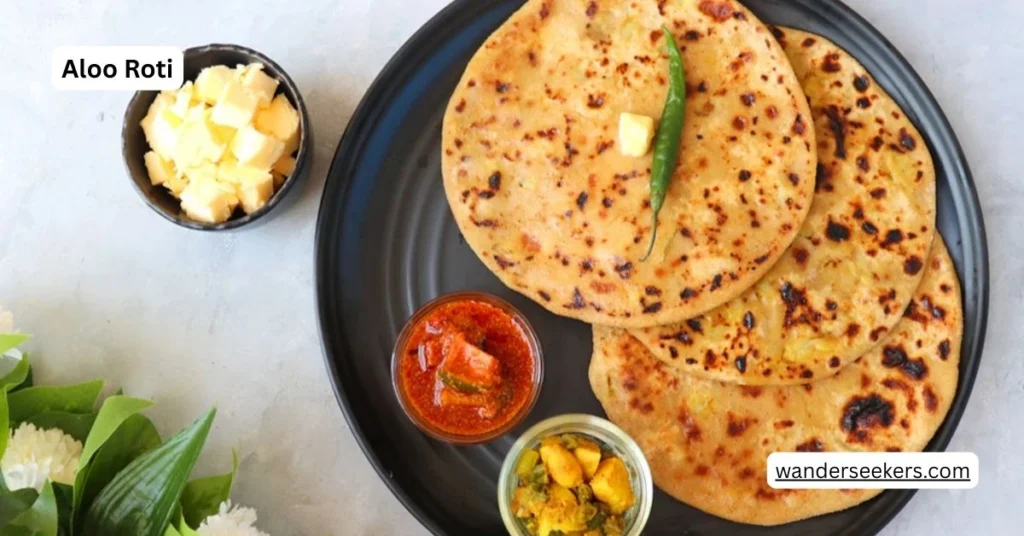
Aloo Roti is a delicious and comforting Indian flatbread made with whole wheat flour and mashed potatoes, infused with spices for extra flavor. Unlike stuffed parathas, the potatoes are mixed directly into the dough, creating a soft and flavorful roti. The dough is prepared by combining boiled and mashed potatoes with flour, salt, cumin, coriander, and green chilies, then kneaded into a smooth consistency. Each portion is rolled out and cooked on a hot tawa until golden brown, with a drizzle of ghee or oil for added richness. Aloo Roti is typically served with pickle, yogurt, or a side of sabzi, making it a wholesome and satisfying meal. This dish is loved for its simple preparation and hearty taste, making it a popular choice for breakfast or lunch.
6. Gajar ka Halwa
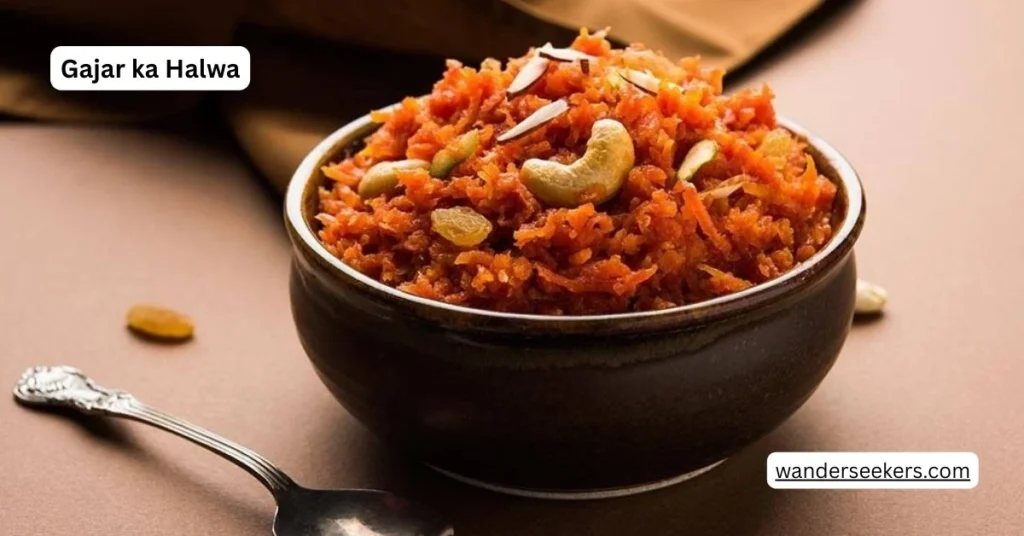
Gajar Ka Halwa is a beloved North Indian dessert, known for its rich, creamy texture and aromatic flavors. Made with grated carrots, milk, sugar, and ghee, this sweet dish is slow-cooked to perfection, allowing the ingredients to blend beautifully. The addition of cardamom powder and chopped nuts like almonds and cashews enhances its taste, making it a festive favorite. Traditionally prepared during winters and special occasions, Gajar Ka Halwa is enjoyed warm, often garnished with khoya or dry fruits for extra richness. The slow-cooking process ensures a deep, caramelized flavor, making it a comforting and indulgent treat. Whether served at weddings, festivals, or family gatherings, this dessert remains a staple in Indian households.
7. Malpua
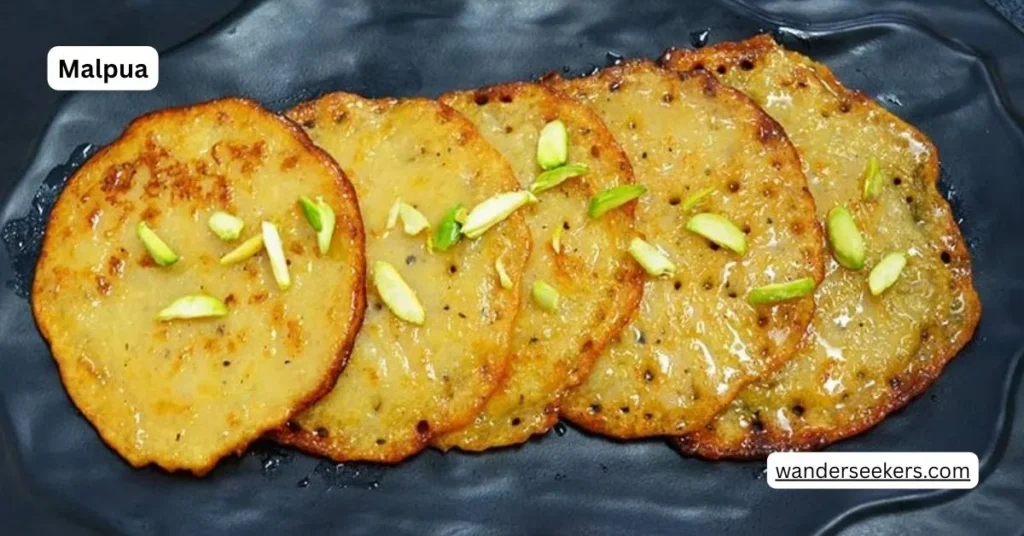
Malpua is a traditional Indian dessert, often enjoyed during festivals and special occasions. These sweet, deep-fried pancakes are made from a batter of wheat flour, milk, sugar, and fennel seeds, giving them a rich aroma and soft texture. Some variations include khoya (dried milk solids) or mashed bananas, adding extra flavor and richness. The batter is poured into hot ghee, fried until golden brown, and then soaked in sugar syrup, making Malpua irresistibly sweet and juicy. It is often served with Rabri (thickened sweetened milk) and garnished with chopped nuts like almonds and pistachios. Malpua is popular in states like Rajasthan, Bihar, Odisha, and West Bengal, each region having its unique preparation style. Whether enjoyed as a festive treat or a comforting dessert, Malpua remains a favorite across India.
8. Besan Masala Roti
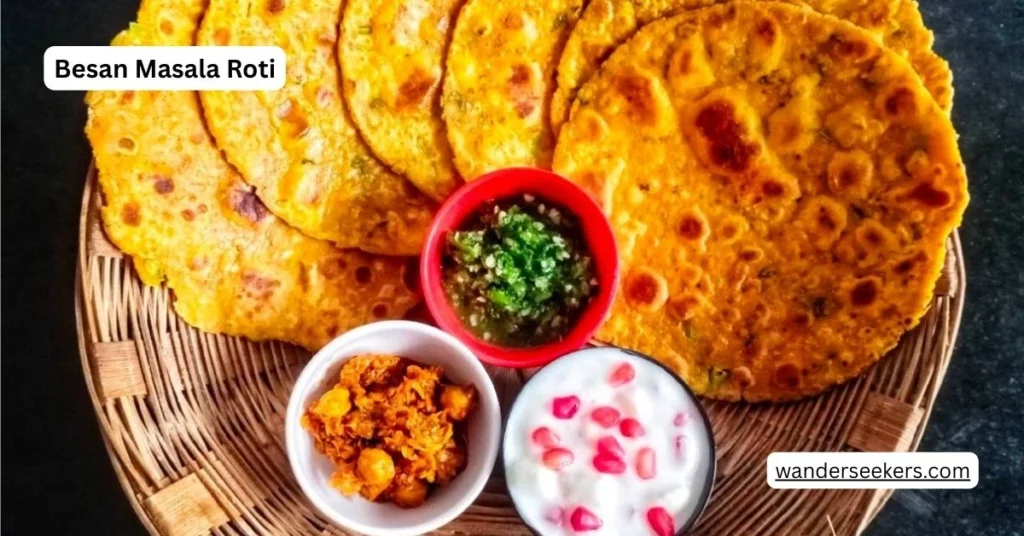
Besan Masala Roti is a flavorful and nutritious Indian flatbread made with gram flour (besan) and whole wheat flour, infused with aromatic spices. This dish is a staple in Haryana, where it is commonly enjoyed for breakfast or lunch. The dough is prepared by mixing besan, atta, turmeric, ajwain, curd, and water, then kneaded into a firm consistency. A special masala filling made with red chili powder, cumin, coriander, and ghee is spread inside before rolling and cooking the roti on a hot tawa. The result is a crispy, golden-brown roti with a rich, spicy flavor. Besan Masala Roti is typically served with achar (pickle) and dahi (yogurt), making it a wholesome and satisfying meal. Its high protein content and gluten-free option make it a great alternative to regular wheat rotis.
9. Kheer
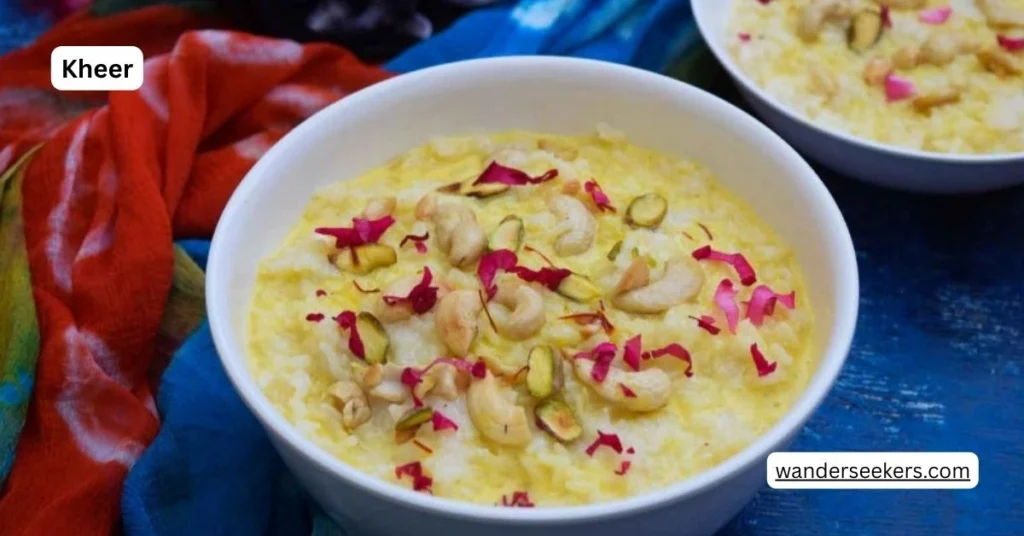
Kheer is a traditional Indian dessert, loved for its rich, creamy texture and perfumed flavors. It is made by slow-cooking rice in milk, sweetened with sugar or jaggery, and infused with cardamom, saffron, and nuts like almonds and cashews. The slow-cooking process allows the flavors to blend beautifully, creating a comforting and indulgent dish. Kheer is often prepared during festivals, celebrations, and religious occasions, symbolizing prosperity and warmth in Indian culture. Some variations include vermicelli kheer, sabudana kheer, and paneer kheer, each offering a unique twist. Traditionally served warm or chilled, it is garnished with dry fruits and a drizzle of ghee, enhancing its richness. Whether enjoyed as a festive treat or a simple homemade dessert, Kheer remains a staple in Indian households, cherished for its delicious taste and cultural significance.
10. Singri ki Sabzi
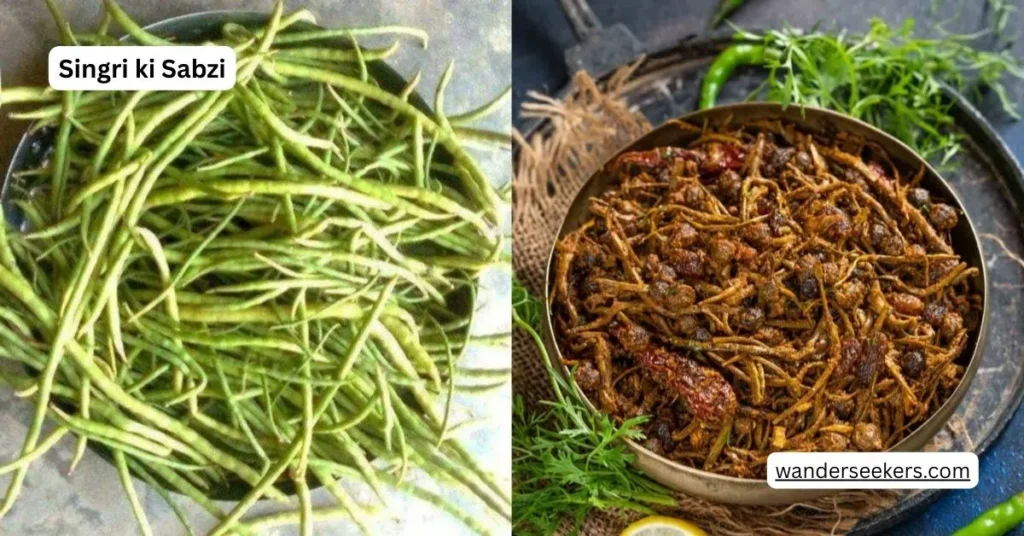
Singri ki Sabzi is a traditional dish from Rajasthan and Haryana, made with dried desert beans (ker sangri) that thrive in arid conditions. The beans are soaked overnight, then boiled and stir-fried with spices like amchur (dry mango powder), red chili, turmeric, and coriander, creating a tangy and flavorful dish. Some variations include yogurt or dried berries, adding depth to the taste. The sabzi is typically cooked in mustard oil or ghee, enhancing its rich aroma. It is best enjoyed with bajra roti or chapati, making for a wholesome and rustic meal. Singri ki Sabzi is not just a dish—it is a reflection of the resourceful cooking traditions of desert regions, where minimal ingredients are transformed into a delicious and nutritious meal.
